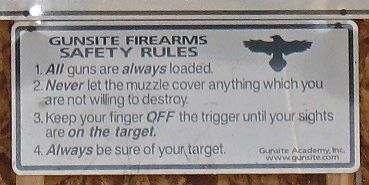Some good examples of how exactly what happened and how it happened (and where it happened) can make a big difference.
The cases cited in posts 1 and 8 were fairly clear examples of possible home invasions. In the first, the person shot broke in; and in the second, the person shot entered through a closed, but apparently unlocked, door. In each, the person shot was identified by the shooter as a stranger to the household. And both incidents occurred in the early morning hours (1:40 am and 4:30 am, respectively).
In the Albrecht case cited in post 18 by DNS, the shooter claimed to have shouted several warnings before firing through the door at the sound of someone apparently trying to get in. The shooter was "no billed" by the Texas grand jury. But clearly firing through a door at an unidentified target is at best unwise
1, and at worst reckless. The shooter was probably lucky; and there can be no guarantee that someone else under different circumstances would be so.
There were additional complicating factors in the
Minnesota and
Montana cases (e. g., apparently the setting of a trap, not identifying the target, continuing the use of force after the threat ceased (Minnesota) and delay in reporting (Minnesota)). The shooter in Minnesota was convicted of first degree murder. The one in Montana has thus far merely been charged.
_________
1. Under the Jeff Cooper/Gunsite Rules of Safe Gun Handling, "always be sure of your target" is Rule 4.


